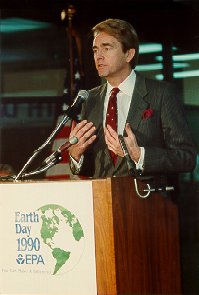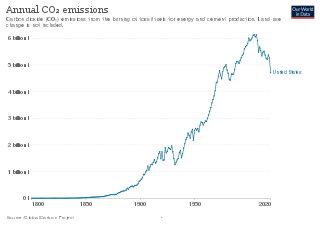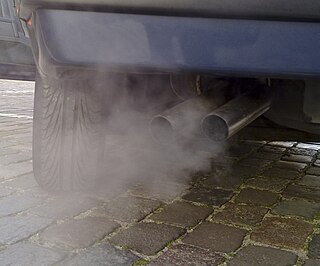Career
Currently,Dudley is a Distinguished Professor of Practice at the George Washington University Trachtenberg School of Public Policy and Public Administration. [1] In September 2009,she founded the George Washington University Regulatory Studies Center,which "raise[s] awareness of regulations’effects and improve[s] regulatory policy through research,education,and outreach." [2] In September 2010 Dudley was appointed as a member of the Administrative Conference of the United States. As of January 2015 she is Vice-President,and President-Elect,of the Society for Benefit-Cost Analysis.
President Bush first nominated Dudley to serve as the OIRA Administrator on July 31,2006. The Senate Governmental Affairs and Homeland Security Committee held a hearing on Dudley’s nomination on November 13,but did not hold a vote to confirm her. Bush re-nominated Dudley on January 9,2007;appointed her to serve as a senior advisor at OIRA on January 30,2007;and gave her a recess appointment as OIRA Administrator on April 4,2007. On January 6,2009,the recess appointment expired and Bush designated Dudley as Acting Administrator of OIRA until his term of office ended on January 20,2009.
From 1998 through January 2007,Dudley worked at the non-profit Mercatus Center at George Mason University,where she directed the Regulatory Studies Program from 2003 to 2006. As an adjunct professor at the George Mason University School of Law from 2002 to 2006,she designed and taught courses on regulations and led regulatory clinics. Earlier in her career,Dudley served as a career civil servant,working as a policy analyst at the Environmental Protection Agency (1984-1985),an economist at OIRA (1985 –1989),and an economist advisor at the Commodity Futures Trading Commission (1989 - 1991). From 1991 until 1998,she was Vice President and Director of Environmental Analysis at Economists Incorporated,a consulting firm.
Dudley has authored more than 25 publications on regulatory matters,including e-rulemaking,electricity,health care,the environment,and occupational safety. She has served on the boards of the Association of Private Enterprise Education,the International Foundation for Research in Experimental Economics—founded by Nobel Prize–winning economist Vernon L. Smith,and the National Federation of Independent Business Legal Foundation (now the NFIB Small Business Legal Center). She has also served as a member of several committees and boards in the Commonwealth of Virginia,including the Virginia Environmental Education Advisory Committee (2000-2002),the Administrative Law Advisory Committee (2000-2003),and the Virginia Waste Management Board (1996-2001).
Dudley holds a Master of Science degree from the MIT Sloan School of Management (1981) and a Bachelor of Science degree (summa cum laude) in Resource Economics from the University of Massachusetts Amherst (1977).
Controversies
Dudley has been termed a conservative academic and her work at the Mercatus ("Market," in Latin) Center generally promoted market solutions over government regulation. She argued,for example,that consumers should be able to choose the efficiency of their household appliances,rather than have the government set energy efficiency standards. She also famously argued against an EPA effort to reduce surface ozone stating that the EPA's proposal would lead to significantly more skin cancers and cataracts. [3]
On July 11,2008,Dudley publicly objected to EPA's analysis of various ways to control greenhouse gases under the Clean Air Act,and transmitted the objections of four cabinet members and four other agency heads. All of these objections were published along with EPA's analysis,which it prepared in response to the April 2007 Supreme Court ruling that EPA has authority to regulate greenhouse gases. The act of an administration publishing a document and disavowing its own conclusions was described as an "extraordinary move" by the Wall Street Journal and "tortured policy" by the Washington Post . On April 17,2009,the Obama administration took the next administrative step under the Clean Air Act by finding that greenhouse gases endanger public health and the environment;however,it reaffirmed the Bush administration's position that legislative action by Congress would be far preferable.
Marianne Lamont Horinko served as Acting Administrator of the United States Environmental Protection Agency (EPA) from July 14, 2003 to November 5, 2003 during the first term of President George W. Bush. Prior to this appointment Horinko was Assistant Administrator for the Office of Solid Waste and Emergency Response (OSWER) at EPA, having been confirmed by the U.S. Senate on October 1, 2001. She continued on as Assistant Administrator until June 1, 2004.

Carol Martha Browner is an American lawyer, environmentalist, and businesswoman, who served as director of the White House Office of Energy and Climate Change Policy in the Obama administration from 2009 to 2011. Browner previously served as Administrator of the Environmental Protection Agency (EPA) during the Clinton administration from 1993 to 2001. She currently works as a Senior Counselor at Albright Stonebridge Group, a global business strategy firm.

The Office of Information and Regulatory Affairs is a Division within the Office of Management and Budget (OMB), which in turn, is within the Executive Office of the President. OIRA oversees the implementation of government-wide policies in, and reviews draft regulations under, Executive Order 12866, the Paperwork Reduction Act, and the Information Quality Act.

Stephen Lee Johnson is an American politician who served as the Administrator of the Environmental Protection Agency (EPA) under President George W. Bush during the second term of his administration. He has received the Presidential Rank Award, the highest award that can be given to a civilian federal employee.

William Kane Reilly was Administrator of the Environmental Protection Agency under President George H. W. Bush. He has served as president of World Wildlife Fund, as a founder or advisor to several business ventures, and on many boards of directors. In 2010, he was appointed by President Barack Obama co-chair of the National Commission on the BP Deepwater Horizon Oil Spill and Offshore Drilling to investigate the oil spill in the Gulf of Mexico.

Lisa Perez Jackson is an American chemical engineer who served as the administrator of the United States Environmental Protection Agency (EPA) from 2009 to 2013. She was the first African American to hold that position.
Massachusetts v. Environmental Protection Agency, 549 U.S. 497 (2007), is a 5–4 U.S. Supreme Court case in which Massachusetts, along with eleven other states and several cities of the United States, represented by James Milkey, brought suit against the Environmental Protection Agency (EPA) represented by Gregory G. Garre to force the federal agency to regulate the emissions of carbon dioxide and other greenhouse gases (GHGs) that pollute the environment and contribute to climate change.

The environmental policy of the United States is a federal governmental action to regulate activities that have an environmental impact in the United States. The goal of environmental policy is to protect the environment for future generations while interfering as little as possible with the efficiency of commerce or the liberty of the people and to limit inequity in who is burdened with environmental costs. As his first official act bringing in the 1970s, President Richard Nixon signed the U.S. National Environmental Policy Act (NEPA) into law on New Years Day, 1970. Also in the same year, America began celebrating Earth Day, which has been called "the big bang of U.S. environmental politics, launching the country on a sweeping social learning curve about ecological management never before experienced or attempted in any other nation." NEPA established a comprehensive US national environmental policy and created the requirement to prepare an environmental impact statement for “major federal actions significantly affecting the quality of the environment.” Author and consultant Charles H. Eccleston has called NEPA, the world's “environmental Magna Carta”.

The Clean Air Act (CAA) is the United States' primary federal air quality law, intended to reduce and control air pollution nationwide. Initially enacted in 1963 and amended many times since, it is one of the United States' first and most influential modern environmental laws.

John D. Graham is a former senior official in the George W. Bush administration and the former dean of the Indiana University O'Neill School of Public and Environmental Affairs. Graham stepped down from the deanship to return to the O'Neill School faculty in the 2019 academic year.
Midnight regulations are United States federal government regulations created by executive branch agencies during the transition period of an outgoing president's administration.

Air quality laws govern the emission of air pollutants into the atmosphere. A specialized subset of air quality laws regulate the quality of air inside buildings. Air quality laws are often designed specifically to protect human health by limiting or eliminating airborne pollutant concentrations. Other initiatives are designed to address broader ecological problems, such as limitations on chemicals that affect the ozone layer, and emissions trading programs to address acid rain or climate change. Regulatory efforts include identifying and categorising air pollutants, setting limits on acceptable emissions levels, and dictating necessary or appropriate mitigation technologies.
The, United States Environmental Protection Agency (EPA) began regulating greenhouse gases (GHGs) under the Clean Air Act from mobile and stationary sources of air pollution for the first time on January 2, 2011. Standards for mobile sources have been established pursuant to Section 202 of the CAA, and GHGs from stationary sources are currently controlled under the authority of Part C of Title I of the Act. The basis for regulations was upheld in the United States Court of Appeals for the District of Columbia in June 2012.

Mobile source air pollution includes any air pollution emitted by motor vehicles, airplanes, locomotives, and other engines and equipment that can be moved from one location to another. Many of these pollutants contribute to environmental degradation and have negative effects on human health. To prevent unnecessary damage to human health and the environment, environmental regulatory agencies such as the U.S. Environmental Protection Agency have established policies to minimize air pollution from mobile sources. Similar agencies exist at the state level. Due to the large number of mobile sources of air pollution, and their ability to move from one location to another, mobile sources are regulated differently from stationary sources, such as power plants. Instead of monitoring individual emitters, such as an individual vehicle, mobile sources are often regulated more broadly through design and fuel standards. Examples of this include corporate average fuel economy standards and laws that ban leaded gasoline in the United States. The increase in the number of motor vehicles driven in the U.S. has made efforts to limit mobile source pollution challenging. As a result, there have been a number of different regulatory instruments implemented to reach the desired emissions goals.

Energy Tax Prevention Act, also known as H.R. 910, was a 2011 bill in the United States House of Representatives to prohibit the United States Environmental Protection Agency (EPA) from regulating greenhouse gases to address climate change. On April 7, 2011, the bill passed the House by a vote of 255 to 172. The bill died in January 2013 with the ending of the Congressional session.
Utility Air Regulatory Group v. Environmental Protection Agency, 573 U.S. 302 (2014), was a US Supreme Court case regarding the Environmental Protection Agency's regulation of air pollution under the Clean Air Act.
Margo T. Oge is an American engineer and environmental regulator who served as the director of the Environmental Protection Agency's Office of Radiation and Indoor Air from 1990 to 1994 and director of the Office of Transportation and Air Quality from 1994 to 2012. Beginning in 2009, Oge lead the EPA team that authored the 2010-2016 and the 2017-2025 Light-Duty Vehicle Greenhouse Gas Emissions Standards. By 2025, these rules require automakers to halve the greenhouse gas emissions of cars and light duty trucks while doubling fuel economy. These rules were the US federal government's first regulatory actions to reduce greenhouse gases.

Mary Dolores Nichols is an American attorney and government official who has been the chairwoman of the California Air Resources Board (CARB) since 2007. She also held that post between 1979 and 1983. From 1999 to 2003, she served as secretary of the California Natural Resources Agency in the cabinet of then-Governor Gray Davis. Due to her efforts to combat global warming, she has been dubbed "the Queen of Green", and described as "the most influential environmental regulator in history."

Andrew R. Wheeler is an American attorney who served as the 15th administrator of the United States Environmental Protection Agency (EPA) from 2019 to 2021. He served as the deputy administrator from April to July 2018, and served as the acting administrator from July 2018 to February 2019. He has been a senior advisor to Governor of Virginia Glenn Youngkin since March 2022. He previously worked in the law firm Faegre Baker Daniels, representing coal magnate Robert E. Murray and lobbying against the Obama Administration's environmental regulations. Wheeler served as chief counsel to the United States Senate Committee on Environment and Public Works and to the chairman U.S. senator James Inhofe, prominent for his rejection of climate change. Wheeler is a critic of limits on greenhouse gas emissions and the Intergovernmental Panel on Climate Change.

The Institute for Policy Integrity is a non-partisan think tank housed within the New York University School of Law. Policy Integrity is dedicated to improving government decisionmaking, and its primary area of focus is climate and energy policy. Policy Integrity produces original scholarly research and advocates for reform before courts, legislatures, and executive agencies at both the federal and state level.












